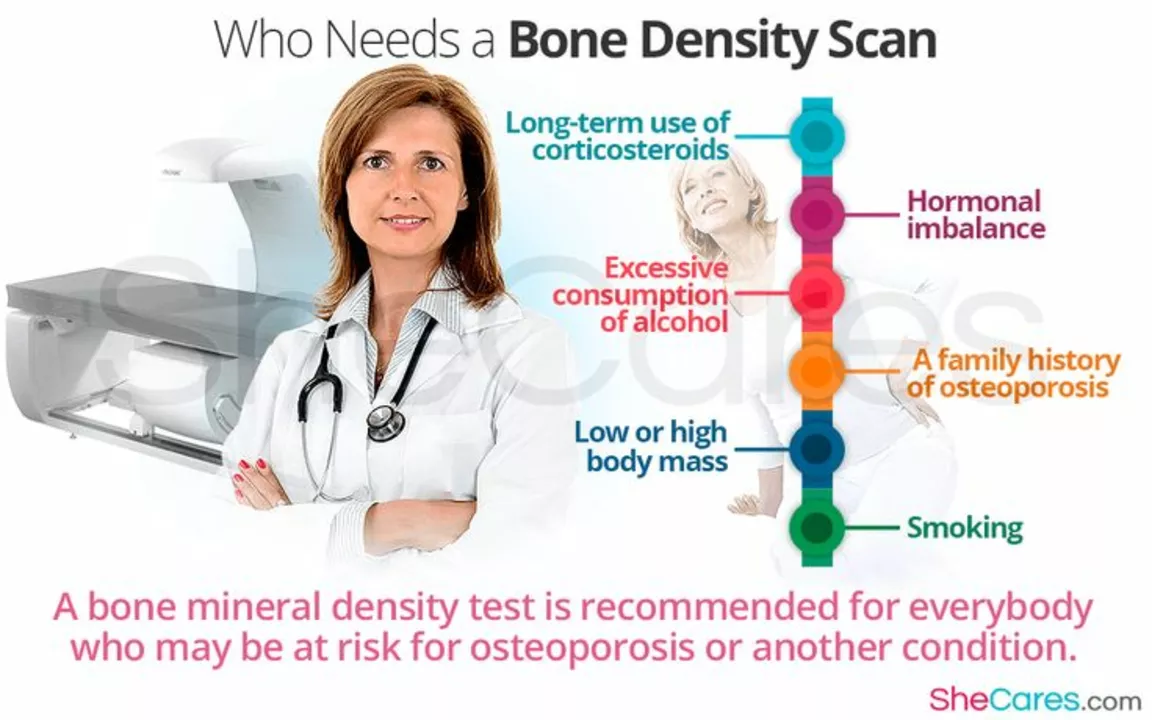Osteoporosis management: practical steps to protect your bones
Broken bones from weak bones are preventable. If you or someone you care for has low bone density, a clear plan makes a big difference. Here are straightforward, usable steps—tests, medicines, daily habits, and safety tips—that actually help reduce fracture risk.
Tests and when to act
Start with a DXA scan to measure bone density and get a FRAX score to estimate 10-year fracture risk. Adults with risk factors (age over 65 for women, 70 for men, long-term steroid use, early menopause, or low-trauma fractures) should be tested sooner. Repeat DXA about every 1–2 years if you’re on treatment or if risk is changing; otherwise every 2 years is common. Check calcium, vitamin D, thyroid, and testosterone (in men) to rule out secondary causes.
Medications that work
There are proven drugs that cut fracture risk. Choose one based on your risk, side effects, cost, and preferences.
- Bisphosphonates (alendronate 70 mg weekly, risedronate weekly or monthly, or yearly IV zoledronic acid) are first-line for many. They reduce spine and hip fractures. Take oral ones with water on an empty stomach and stay upright 30 minutes. Review after 3–5 years; some people can take a drug holiday depending on risk.
- Denosumab (injection every 6 months) is powerful but needs planned follow-up. If you stop it suddenly, bone loss can rebound, so your doctor will switch or sequence treatments.
- Anabolic options (teriparatide daily injection or romosozumab) build bone and suit very high-risk patients. Teriparatide is typically limited to about 2 years.
Before starting bisphosphonates or denosumab, tell your dentist. Good dental care reduces the rare risk of jaw problems. Also discuss kidney function and other meds that affect bones.
Stick with treatment. Missed doses lower benefit. If side effects bother you, talk to your clinician about alternatives rather than stopping.
Daily habits that help
- Calcium: aim for 1000–1200 mg daily from food first. Supplement only if you can’t meet that amount through diet. Space supplements—calcium can interfere with some antibiotics and thyroid pills.
- Vitamin D: 800–2000 IU daily is a common range. Your doctor may check levels and adjust the dose.
- Exercise: do weight-bearing (walking, hiking, dancing) and resistance training (bands, weights) 3 times a week. Add balance work (tai chi, single-leg stands) to cut fall risk.
- Avoid smoking and limit alcohol to lower bone loss. Keep a healthy protein intake; very low-calorie diets can harm bones.
Fall-proof the home: remove loose rugs, add grab bars, improve lighting, and get regular vision checks. Small changes prevent most fractures.
Finally, keep communication open with your healthcare team. Track DXA results, report new fractures or dental issues, and review treatment plans every year. With the right meds, sensible supplements, regular exercise, and safety checks, you can reduce fracture risk and stay active for years to come.

Alendronate: A Miracle Drug for Osteoporosis Management
May 13 2023 / Health and WellnessI recently came across Alendronate, a miracle drug for managing osteoporosis. This medication works wonders in strengthening our bones by slowing down bone loss and increasing bone mass. Not only does it help in preventing fractures, but it also allows those suffering from osteoporosis to lead a better quality of life. The best part is that it's available in an easy-to-take oral tablet form. I can't help but feel grateful for such medical advancements that make life easier for so many people.
VIEW MORE